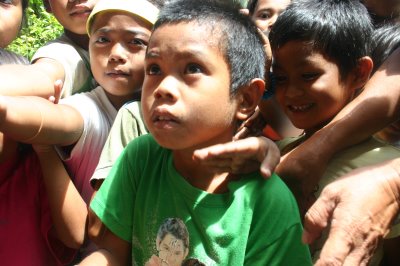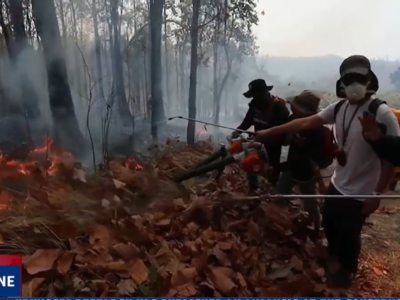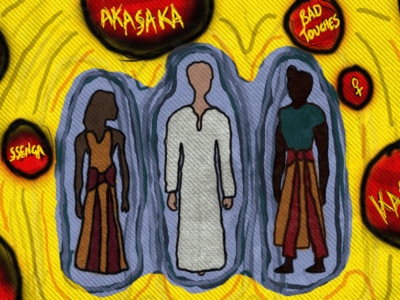The escalation of conflict between government troops and Muslim separatist rebels in several areas of Mindanao Island has affected the lives of hundreds of thousands of innocent civilians. Mindanao is located in south Philippines.
The intensified fighting began after a peace agreement was rejected by many politicians, and finally by the Philippine Supreme Court. Critics believe the agreement was unconstitutional since it would compromise the sovereignty of the Republic of the Philippines. They added that the agreement would pave the way for the establishment of a separate Moro-controlled state within the territories of the country.
Angered by the rejection of the agreement, a rebel commander attacked military posts which produced civilian casualties. The government retaliated by launching offensives against the territories controlled by the rebels.
The fighting has not stopped. More than 610,000 people have been displaced already. The non-stop fighting has created several “ghost towns” in some provinces of Mindanao. The situation of refugees is deteriorating. Children are among those who are suffering the most.
Volunteer Sarah Matalam posts pictures of evacuation centers in Cotabato province:



Muslim groups want the government to stop the indiscriminate air strikes by the military. Like a Rolling Store uploads a report by a humanitarian mission which visited several evacuation sites in Mindanao:
“The offensives have led to mass evacuations. In the evacuation centers, the displaced persons suffer from inadequate facilities. Most of them have set up tents in whatever public place available. With heavy rains and flooding now common at this time of year, many child evacuees are sick with cough, cold, fever, and diarrhea. A number of evacuees have died of disease. There is also the trauma experienced by the evacuees, particularly the children.”
Dr. Carol Araullo, a member of the humanitarian mission, emphasizes that more help is needed:
“The hunger, sickness and generalized misery; the listlessness, the yearning to go back to their farms and homes safely; the appeal for a return to normalcy, for an end to the military restrictions over their comings and goings – these images and plaints became etched in our minds and hearts as we went from one evacuation center to another.
“Scores of victims of human rights abuses were interviewed: those wrongfully arrested, those beaten up because they were rebel suspects or so that they would point to the rebels/rebel sympathizers; those whose relatives had been killed or were injured in the course of the government’s drive to flush out the “rogue elements” of the Moro Islamic Liberation Front; those whose houses and other properties had been destroyed.
“After the teams had tallied the numbers of patients treated, families given relief goods and victims of human rights violations attended to, we came to the sobering conclusion that what the Mission had achieved was a mere drop in the bucket compared to the overwhelming needs.”
Journalist Edwin Espejo was affected by what he witnessed:
“Deep into the heart of the conflict, trails of destruction – burnt houses, abandoned homes and ubiquitous presence of checkpoints and war materiel – are eerie testaments of the war.
“Of course, we are living in troubled times and disturbing scenes are fast numbing one’s senses. Many would argue that journalists covering the conflict in Mindanao cannot afford to be emotionally attached to events unfolding before their very eyes.
“Yet one cannot totally dissociate his or her self from realizing that the war is affecting not only the combatants from both sides of the conflicts. It is also sublimely creating different levels of consciousness and commitment on journalists covering the war and affecting the quality of their reportage.”
Reckons of Spring writes that while Manila politicians are debating, the people of Mindanao are suffering:
“While many of the politicians and top government officials based in Manila are busy in expressing their contrasting opinions about the issues related to the “ancestral domain”, I wonder how the displaced locales of North Cotabato and neighboring provinces are faring. Do they have any food to ease their hunger? Do they have any medicine or medical attention to ease their pains? Can they ever sleep amidst the horror of the ongoing circumstances, or to simplify my question, can they find a shelter, no matter how temporary it is- for a night's sleep?”
The fighting is turning uglier everyday. An Al Jazeera team has learned that the government has been recruiting vigilantes to fight the rebels:
“Civilians are being given jobs normally the preserve of the police and army at an alarming rate across Mindanao. In North Cotabato Al Jazeera met some new recruits being put through their paces in a military-backed militia programme that normally takes three months. This training programme has been accelerated to just six weeks in order to fill what the authorities regard as a security vacuum.”
Watch the report of Al Jazeera:
And Part II of the report:
The rebel commander who is probably the most wanted man in the Philippines today insists in a video interview that it was government troops who first attacked the rebels.
Another controversy is the alleged involvement of US troops in the fighting. Himagsik Kayumanggi reports:
“US Special Forces were sighted inside the 64th Infantry Battalion Camp in Datu Saudi Ampatuan, Maguindanao. Bai Ali Indayla of the Moro human rights group Kawagip testified that the soldiers were engaged in covert operations, such as the supervision of drones or spy planes and predator missile strikes. This was confimed by Major Gen. Eugenio Cedo, then commander of the Western Mindanao Command. As usual, the US Embassy denied that the soldiers were involved in actual combat; they were only responding to the military request for aerial surveillance to determine conditions of the terrain and visibility, for “future civil-military projects,” to quote Rebecca Thompson, US Embassy Information Officer.”
Peace advocates want both parties – the government and Muslim rebels – to call for a ceasefire. There is an online petition asking the government to cease its military operations in Mindanao. A letter was sent to the Holy Pope to intervene. The Philippines is a Catholic-dominated country:
“We hope that Your Holiness could help us bring peace and justice to our brothers and sisters in Mindanao by expressing concern about the unfolding humanitarian crisis and appeal for restraint for the protection of all civilians, as well as for the opening of access for the provision of speedy humanitarian assistance to the affected population.”
Mindanao bloggers have vowed to blog for peace. Journalist Walter Balane has a message for bloggers:
“Blogging might not only be limited to blogging about Mindanao and its peoples but also helping the “voiceless” learn to blog so they, too, can blog about themselves.
“Of course it would be extremely difficult for existing Mindanao bloggers to access many of the areas safely and for the people in communities to approach which local bloggers can help them.
But bloggers must continue to try linking them and engaging them for mutual respect and understanding in an effort to connect more and more people.
Many of us who are already blogging about the voiceless must continue doing it and infect others to do the same.
We can focus on a Mindanao consciousness that is more inclusive, not exclusive.”







4 comments
Good news everyone. From now on, town councils will be accountable to residents!!!!!
I don’t think that crisis is main problem of this country, some government officials knows it. The main reason of this crisis is corruption, if this officials do their respective jobs in a right way i think this crisis would not happen. The second reason is conflict of interest, As a member of this country why don’t we do some valuable thing for the betterment of this country.